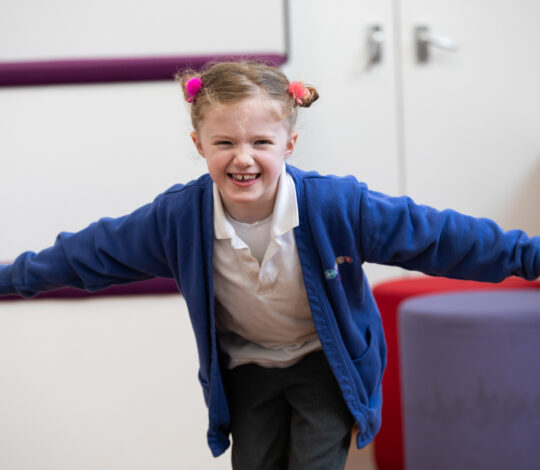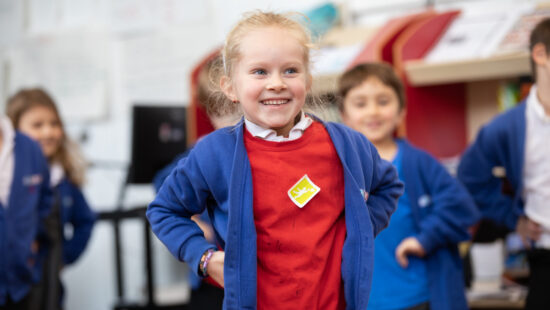Building emotional regulation skills in primary schools

Building emotional regulation skills in primary schools
Emotional regulation is the ability to recognise, understand and manage our own feelings. For young children, these skills are still developing and need active support. In the primary years, emotional regulation underpins not only learning, but also behaviour, friendships and overall wellbeing.
Yet, teachers are under more pressure than ever. Many are working with growing numbers of children who have complex emotional needs, while juggling stretched resources and packed timetables. With so much on their plates, it’s understandable that emotional development can feel like one more thing to squeeze in.
But helping children build regulation skills doesn’t have to mean overhauling the school day. With a few simple, intentional strategies, teachers and schools can make a big difference. This blog explores practical ways to support emotional regulation in the classroom and how Artis can help.
Why emotional regulation matters
Emotional regulation is deeply connected to brain development. The parts of the brain responsible for self-awareness, impulse control and reflection are still maturing throughout childhood, especially during the primary years. Children often feel things intensely, without yet having the tools to manage those feelings constructively.
When children can regulate their emotions, they are better able to concentrate, make friends, recover from setbacks and participate in class. It reduces conflict, improves behaviour, and helps create calm, focused classrooms. These benefits go beyond academic success – they support attendance, resilience and long-term mental health.
What emotional dysregulation looks like
When a child struggles to regulate their emotions, it can show up in many ways. Some may lash out or have sudden outbursts. Others may shut down, avoid interaction or seem withdrawn. You might notice restlessness, anxiety, or difficulty staying focused.
Classroom strategies to build regulation skills
It’s important to remember that behaviour is communication. A dysregulated child isn’t being ‘difficult’ – they’re overwhelmed. Reacting with punishment alone often misses the root cause. Instead, identifying triggers and supporting the child to manage their feelings is far more effective in the long run.
There are many practical ways to weave emotional regulation into everyday classroom life.
One of the most effective is using regular check-ins to help children notice and name how they’re feeling. This might be through a visual feelings chart, coloured ‘zones of regulation’, or a quick thumbs up/down scale as they come in.
Teachers can also model regulation themselves. Calmly naming your own emotions – “I’m feeling a bit frustrated, so I’m going to take a deep breath before we carry on” – shows children that feelings are normal and manageable.
Developing emotional vocabulary is key. Stories, PSHE lessons and circle time offer natural moments to explore different emotions and discuss how they feel in the body. The more words children have for feelings, the easier it is to express them safely.
Simple calming techniques, such as breathing exercises or grounding games that involve the senses, can be taught and practised regularly. These don’t need to take long – even 30 seconds can help reset a child’s nervous system.
Creating a calm corner in the classroom – a quiet space with soft furnishings, visual prompts or sensory items – offers children somewhere to go when they need a moment to self-regulate. It’s not a ‘naughty step’, but a supportive tool.
Finally, praise effort, not just results. When a child tries to calm themselves or asks for help, recognise it. “You took a moment to breathe when you were upset – that’s brilliant self-regulation.” This builds confidence and encourages positive strategies.
Whole-school approaches that support regulation
While individual strategies matter, the biggest impact comes from a whole-school approach. When all staff understand emotional regulation and respond consistently, children feel safer and more supported.
Training in trauma-informed or relational practice helps staff recognise the signs of dysregulation and respond with empathy rather than judgement. A consistent approach across classrooms, lunch halls and playgrounds ensure that children know what to expect.
Predictable routines and clear boundaries help children feel secure. Regular moments for reflection – whether through mindfulness, storytelling or class discussions – provide space to process emotions and learn from experiences.
School policies also need to reflect this approach. Behaviour policies that focus only on consequences can unintentionally shame or isolate dysregulated children. Reviewing these through an emotional lens can help ensure they’re supporting regulation, not undermining it.
Encouraging staff to model their own emotional strategies is just as important. Children learn more from what we do than what we say. When adults handle their own feelings calmly and openly, children follow suit.
How Artis helps
Artis supports emotional development through creative learning. Our sessions use music, movement and drama to help children express and explore emotions in safe, engaging ways. This builds confidence, emotional literacy and tools for self-regulation.
By embedding these sessions into the weekly routine, we help schools create space for feelings while supporting wider outcomes in learning, behaviour and wellbeing. We also work closely with staff, offering training and ideas to carry these practices across the school day.

